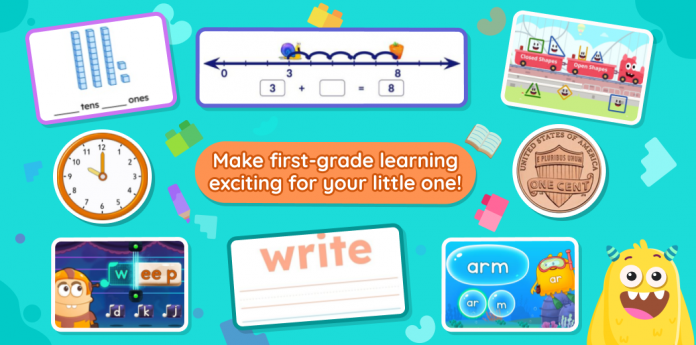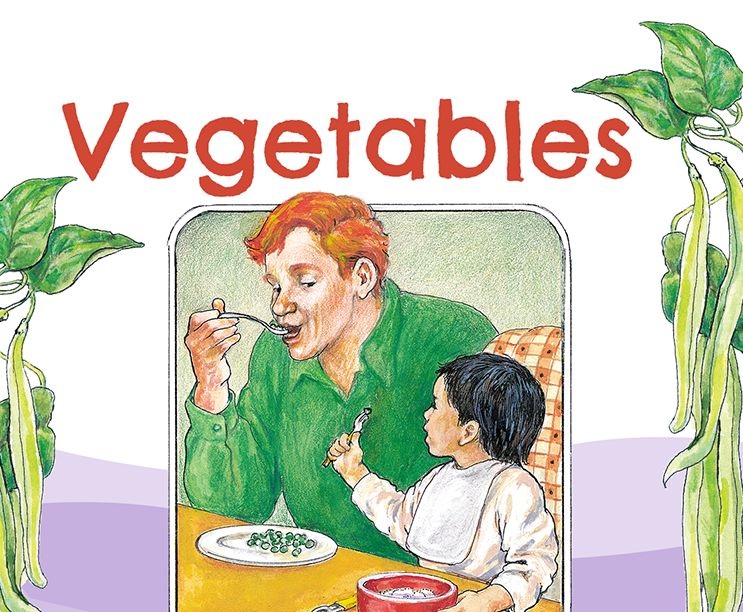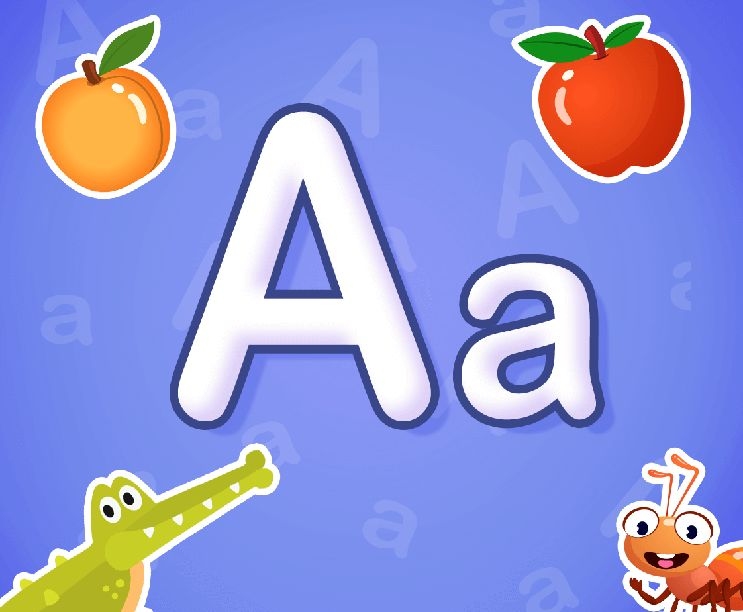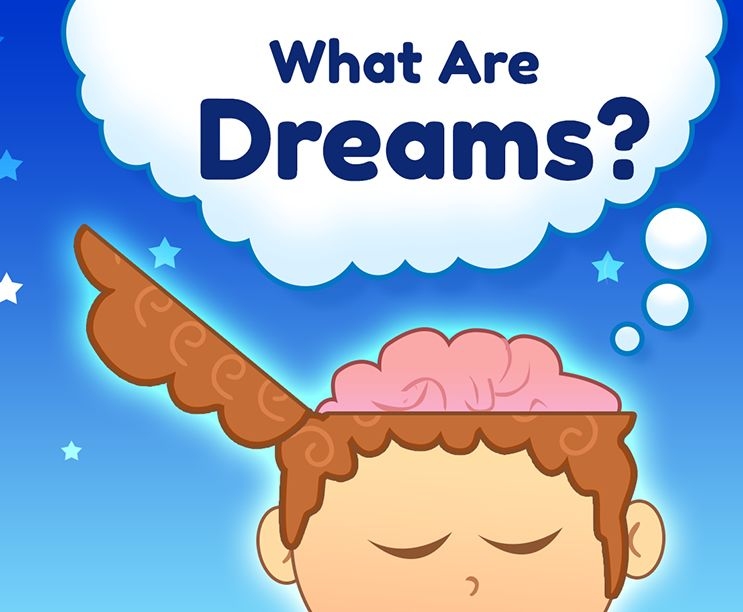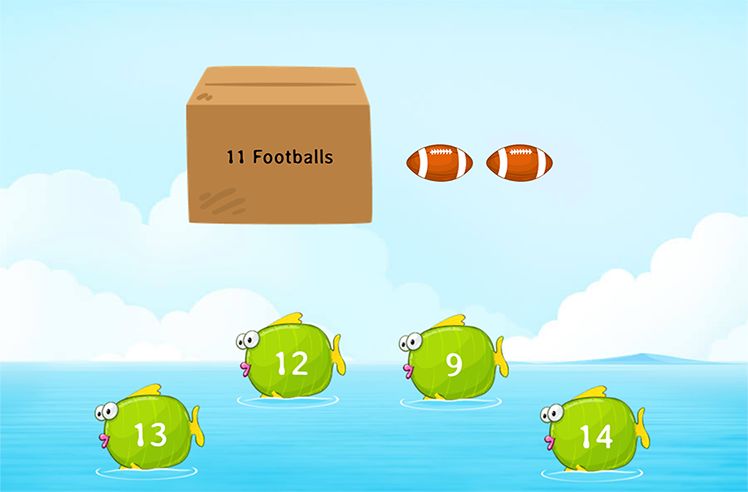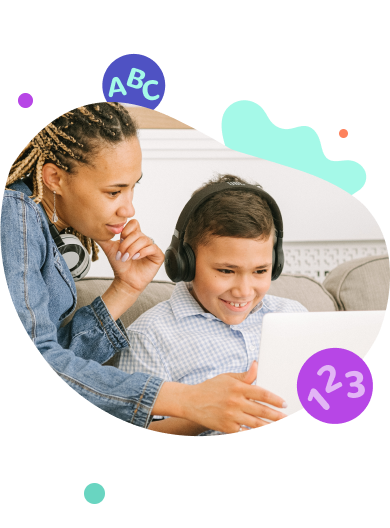Welcome to the exciting world of first grade! What do first graders learn? They explore various subjects, including reading, writing, math, science, social studies, and the arts.
Math & ELA | PreK To Grade 5
Kids see fun.
You see real learning outcomes.
Watch your kids fall in love with math & reading through our scientifically designed curriculum.
Parents, try for free Teachers, use for free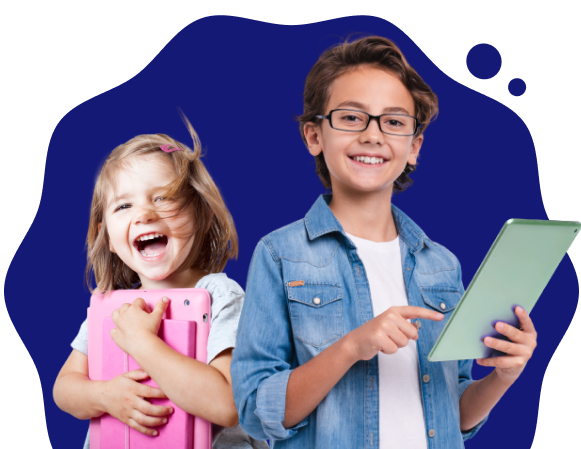
As your child embarks on this important educational journey, you may experience a mix of emotions—anticipation, excitement, and perhaps even a touch of nervousness. Rest assured, you’re not alone. Together, we’ll navigate this year of growth and discovery. Get ready to explore what first grade has in store—from the first day of school!
This research from the Harvard Graduate School of Education shows that academic success can often be predicted as early as first grade. While struggles in this grade don’t guarantee future difficulties, they highlight the need for extra support, such as help with reading or math. First grade lays the educational foundation, and it’s crucial to ensure it’s a solid one.
As your child progresses through first grade, many of the skills they learned in kindergarten will continue to build. If you’re curious about what specific skills and concepts kindergarten typically covers, check out this guide: What Do Kids Learn in Kindergarten: Important Concepts & Skills.
What Do First Graders Learn?: 9 Subjects and Skills
This comprehensive guide outlines the essential first-grade subjects and skills. Read on to discover the Grade 1 curriculum, important learning objectives, and fun first-grade activities to support your child’s academic growth. Use this resource to create a personalized first-grade skills checklist and track your child’s progress throughout the year.
1. Reading in the 1st Grade
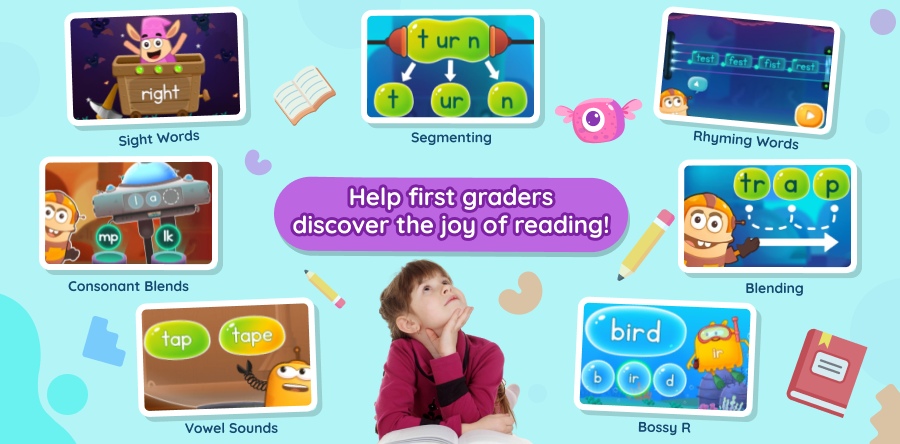
First grade is often called “the reading year” because it’s when literacy skills really take off. This study says that students who struggle to read at the end of first grade will likely continue to struggle in fourth grade.
The reading level increases in the first grade. First graders learn more complex words and sounds and start reading sentences and paragraphs. By the end of first grade, they should be able to read fluently and understand what they read. Reading skills focus on crucial elements such as reading comprehension, phonics, phonological awareness, and vocabulary.
Here are some essential reading skills kids learn in the 1st grade and engaging activities parents can use to support their child’s reading journey:
- Blending and segmenting single-syllable words.
i) Clap or Tap: Clap or tap while saying each sound in a word like “dog” (/d/ /o/ /g/), then blend the sounds to say the word together.
ii) Stretch Out the Sound: Say a word slowly, stretching out each sound (e.g., “c-a-t”). Have your child listen and blend the sounds together to say the word. Switch roles and let them segment a word for you to blend.
iii) Blending and Segmenting Games: In these games, kids will enjoy fun activities like joining letter sounds that come in bubbles to make a new word and stretching a word to break it down into its sounds.
- Understanding the letter-sound correspondences in common blends and consonant digraphs (e.g., sh, ch, th).
i) Flashcards: Create flashcards with common blends (e.g., bl, cr, st) and digraphs (e.g., sh, ch, th). Show the cards to your child and have them say the sound, then think of a word that starts with or includes that sound.
ii) Sorting: Write a mix of words with different blends and digraphs (e.g., “ship,” “chip,” “brave,” “crash”) on cards. Ask your child to sort them into groups based on the blend or digraph they contain, helping reinforce the letter-sound connections.
iii) Blending Games: Here are interactive consonant blend games that help kids explore words with initial and end blends. For instance, kids will drag and drop the initial blend “tr” at the right place in the puzzle “_im” to create the word “trim.” They will also learn each individual sound along the way.
- Creating new words by manipulating individual sounds (phonemes).
i) Sound Swap: Give your child a word (e.g., “bat”) and ask them to change one sound to make a new word (e.g., change /b/ to /c/ to make “cat”). Repeat with different sounds (beginning, middle, or end).
ii) Word Chain: Start with a word (e.g., “pan”). Each player takes turns changing one sound to create a new word (e.g., “pan” → “pin” → “pit”). This encourages children to think about how manipulating sounds changes words.
- Decoding long vowel sounds in one-syllable words.
i) Silent E Words: Show them a word like “cake” and explain how the silent ‘e’ makes the ‘a’ a long vowel sound, then have them practice reading similar words (like “bike,” “rope”).
ii) Read Aloud: Write out one-syllable words with long vowels, like “lake” and “bone,” and ask them to read the words, emphasizing the long vowel sound.
iii) Interactive Games: These games are aligned with the science of reading, which teaches phonics in a clear and organized way. They focus on long vowel sounds like a, e, i, o, and u. Kids can play games to learn these sounds, like matching the right sound to a word or figuring out if a word has a long or short vowel. This helps them read words correctly, understand phonics, and spell better.
- Counting the number of syllables in a word.
i) Clapping: Clap your hands for each syllable in a word (e.g., “ba-na-na” gets three claps) and have them do the same.
ii) Tapping Fingers: Say a word like “apple” and ask them to tap their fingers on the table for each syllable as they say it aloud.
iii) Syllable Worksheets: Have kids practice with these fun printables. In these exercises, kids will enjoy fun activities like solving a maze by connecting single-syllable words, counting the number of syllables, or spotting words with a specific number of syllables:
Related Reading: How to Teach Syllables in 8 Easy Steps
- Reading sight words
i) Sight Words Flashcards: Use flashcards to create a list of common sight words for first graders like “the,” “and,” and “said,” and have them read the words aloud.
ii) Memory Game: Play a memory game where they match pairs of sight words to reinforce recognition.
iii) Sight Word Games: Add these sight word games to your child’s study routine! They cover both Dolch and Fry sight words. Kids will try to recognize and spot common sight words repeatedly in a group of words.
- Identifying root words and suffixes.
i) Write a word like “happily” and have them identify the root word “happy” and the suffix “-ly.”
ii) Create a matching game where they pair root words (like “play”) with common suffixes (like “-ing” to form “playing”).
iii) Reinforce the concept using these fun printable worksheets. Here, kids will create new words using affixes and expand their vocabulary with root words:
- Answer questions about key ideas, the central message, and details in a text.
i) W-Chart: Create a chart with columns labeled “Who,” “What,” “Where,” “When,” and “Why.” After reading, ask your child to fill in the chart with information from the story, helping them focus on key details.
ii) Question Cards: After reading a story, use pre-made question cards (e.g., “What is the story mostly about?”, “Who are the main characters?”, “What lesson did the story teach?”). Have your child answer these questions to check their understanding.
iii) Reinforce with Worksheets: Consider using these printables to boost kids’ comprehension through engaging activities such as picking the best description for a given picture, or reading a passage and choosing the central message.
- Describe characters, settings, and major events in a story.
i) Make a chart where your child can list each main character’s traits (e.g., “brave,” “kind,” “curious”) and provide examples from the story that show these traits. This helps them understand and describe the characters in more depth.
ii) Create a story map with sections for “Characters,” “Setting,” and “Major Events.” Have your child fill in each section with descriptions from the story, helping them organize the information.
iii) Consider using these printables that encourage kids to answer essential questions about the story, compare characters, and create their own stories using a given context and pictures.
- Use illustrations and details in literary and informational texts to discuss story elements and/or topics.
i) Illustration-Detail Match: After reading a story, ask your child to pick an illustration from the book and describe how it connects to a specific part of the text. They can explain how the picture shows the setting, an important event, or a character’s actions or feelings.
ii) Encourage your kids to bring a recently-read story to life through their vibrant art. Help them draw a picture matching a given description. You can also ask them to caption illustrations. These worksheets will help you plan these activities with ease:
- Reading Books:
Books can teach kids countless things just through daily reading! Parents should spend quality reading time with their children to build this habit. Each page opens up a new world. The benefits of reading together include:
- Boosting imagination
- Expanding vocabulary
- Building empathy and comprehension
- Fostering a love of learning
- Strengthening your bond with your child
Here are some fantastic books to kickstart a fun reading journey with your child, covering read-alouds, decoding books (for phonics fun), leveled readers (books categorized by their reading level), fun bedtime stories, and more!
Book 1: Vegetables
Book 2: Adventurous A
Book 3: What are dreams?
Parents can choose between the Read-to-Me and Read-by-Myself features. The read-aloud feature makes it easier for younger children or early readers to enjoy stories independently. Full-page illustrations, simple texts, and audio support make reading a fun experience!
Related Reading: Best Books To Read For 1st graders
2. Writing in the 1st Grade

In first grade, expect writing skills to improve significantly. With motor skills already developed in kindergarten, the focus shifts to creative and inventive writing. Encourage your child to use their imagination and write unique stories using fun writing prompts. Help them understand word sounds and practice writing them down. Handwriting improvement is also a key part of the first-grade curriculum.
Let’s understand other important things and aspects that first-grade writing lessons include, along with fun learning activities parents can use to reinforce these skills:
- Understanding the right way to use frequency words in writing.
i) Create simple sentences and ask them to add frequency words like “always,” “sometimes,” or “never” (e.g., “I always eat breakfast”).
ii) Write a few sentences and have them choose the appropriate frequency word to complete each one (e.g., “I ___ go to the park”).
- Writing more detailed and comprehensive texts (introducing a topic, giving some facts, and wrapping it up with a conclusion).
i) Ask them to write about their favorite animal. Start by introducing the animal, providing a few facts, and ending with why they like it.
ii) Have them write a simple “How-To” text (e.g., “How to make a sandwich.”), focusing on introducing the task, explaining the steps, and concluding with a conclusion. Here’s a fun worksheet to get started with:
- Writing an opinion on a topic or personal experience and supporting it with reasons.
i) Ask them to write about their favorite food and explain why they like it, giving at least two reasons to support their opinion.
ii) Have them write about a fun day they had, stating what made it enjoyable and supporting their opinion with reasons like, “I liked it because I played with my friends and had ice cream.”
iii) Here’s a fun guiding worksheet designed to help kids understand how to structure their opinions using a hamburger model:
- Learning to use descriptive words and correctly spelling familiar words.
i) Describe an object using adjectives (e.g., “The soft, yellow ball”) and practice spelling familiar words.
ii) Encourage them to write a short sentence, adding descriptive words like “big,” “happy,” or “blue.”
iii) Here’s a fun worksheet in which kids will practice descriptive writing using feeling words:
- Write narratives about real or imagined events, describing a sequence of those events.
i) Write a story about a recent trip, describing the events in order (e.g., “First, we went to the park. Then we played on the swings”).
ii) Imagine a superhero adventure and describe what happens step by step in the story.
iii) This fun worksheet challenges kids to examine a picture and create their own story about what might have happened. It’s a great way to boost critical thinking and storytelling skills.
- Understand the point of view in a text.
i) Have your child identify who is telling the story (a character or an outside narrator). Discuss how the narrator’s point of view influences how the events and characters are described. Ask, “How would the story be different if another character was telling it?”
ii) Get started with these engaging worksheets where kids will learn to build their own stories from different perspectives, write about characters’ routines using visual cues, and complete conversations by expressing their points of view:
- Creating a response to a text or personal experience through a poem, artwork, play, or other creative form.
i) Draw a picture in response to a book they’ve read and explain the connection to the story.
ii) Have them write a short poem about a personal experience, like a fun day with friends, using simple rhymes or descriptive language.
iii) Here are well-aligned worksheets to practice with your child—design birthday cards, label birthday invitations,
Related Reading: Fun Writing Prompts for 1st Grade: Journal Prompts
3. Grammar in 1st Grade
Grammar is the building block of clear and effective communication. In first grade, children learn the basic rules of grammar, such as sentence structure, punctuation, and parts of speech, which helps them express their ideas and understand the written and spoken word.
Here are essential grammar skills kids learn in 1st grade and fun learning activities parents can use to give kids an early edge:
- Understanding when to use lower and upper cases while writing.
i) Ask them to capitalize the first word in a sentence, dates, and names of people, and the pronoun “I.”
ii) Write a sentence with all lowercase letters, and ask them to correct it by capitalizing the first letter and proper nouns.
iii) Give them a list of words (e.g., names, places, and common nouns) and ask them to sort them into categories: words that need uppercase letters and words that don’t.
- Understanding the correct usage of ending punctuation like full stop and question marks; learning to edit their writing.
i) Write simple sentences and ask them to choose whether to end it with a full stop (.) or question mark (?).
ii) Read sentences aloud and have them signal when to use a full stop or a question mark based on the sentence’s tone.
iii) Give them a short paragraph with missing punctuation or incorrect capitalization and ask them to correct it.
iv) Practice punctuation skills with engaging activities like filling in missing commas and adding the right punctuation marks:
Begin here
- Identify and use frequently occurring parts of speech: Nouns, pronouns, adjectives, verbs, adverbs, prepositions, determiners, conjunctions, etc.
- Use nouns (singular and plural nouns, common, proper, and possessive nouns)
i) Plural Noun Sorting: Give your child a list of singular nouns and ask them to sort them into groups: those that take “/s/” and “/es/” when made plural (e.g., “cat” → “cats” vs. “box” → “boxes”). Boost this practice using these targeted worksheets where kids will enjoy word-search puzzles to spot plural and singular nouns:
ii) Make sentences using possessive nouns (e.g., “This is Tom’s book”). Ask your child to find examples of common, proper, and possessive nouns around the house or in a favorite book, writing them down in separate lists.
iii) Consider these worksheets for reinforcement. In these engaging activities, kids circle, underline, and categorize nouns. They will also learn to identify different types of nouns and use them in sentences.
- Form frequently occurring verbs. Convey a sense of time.
i) Verb Charades: Act out different frequently occurring verbs (e.g., “run,” “jump,” “sing”) and ask your child to guess the verb and use it in a sentence.
ii) Verb Tense Timeline: Write a verb on a timeline (e.g., “play”) and ask your child to form the past, present, and future tense of the verb (“played,” “play,” “will play”).
Try these targeted worksheets to help kids identify the verb tenses:
- Use frequently occurring adjectives.
i) Give them an object (like an apple) and ask them to describe it with adjectives (red, round, shiny).
ii) Read a story with your child and have them identify frequently used adjectives (e.g., “big,” “happy,” “fast”). Then, ask them to describe their favorite toy using adjectives.
iii) Use worksheets that teach with fun activities, like drawing and describing characters, writing adjectives for favorite things, and spotting adjectives in sentences.
- Use frequently occurring conjunctions.
i) Provide your child with two simple sentences and ask them to join them using conjunctions like “and,” “but,” or “because” (e.g., “I like apples. I like bananas.” → “I like apples and bananas.”).
ii) Write sentences with missing conjunctions (e.g., “I was hungry, ___ I ate lunch.”) and ask your child to fill in the blanks using the correct conjunction.
iii) Here’s a fun worksheet where kids read a passage and circle conjunctions:
- Produce and expand simple, compound, declarative, interrogative, imperative, and exclamatory sentences. Understand and use question words.
i) Sentence Sorting: Write different types of sentences (e.g., “The dog runs fast!” or “Can you help me?”) and ask your child to sort them into categories: declarative, interrogative, imperative, and exclamatory.
ii) Help kids explore, identify, complete, and learn different sentence types using these engaging activities:
- Identify and use frequently occurring prepositions.
i) Place a toy in different locations (on the table, under the chair) and ask them to describe the position using prepositions.
ii) In these worksheets, kids will enjoy activities like matching prepositions with the correct picture, filling in the blanks with the correct preposition to complete a sentence, and finishing a preposition scavenger hunt.
- Use personal, possessive, and indefinite pronouns
i) Play a game where they replace nouns with pronouns in sentences (e.g., “Tom is running” becomes “He is running”).
ii) Place several items on a table and ask your child to describe who owns each item using possessive pronouns (e.g., “This is my book,” “That is his toy”).
iii) Read a short text with your child and ask them to find and highlight indefinite pronouns (e.g., “everyone,” “someone,” “nothing”). Then, discuss how these pronouns are used to refer to non-specific people or things.
iv) Help kids practice pronouns using printable worksheets. In these worksheets, kids will choose the correct pronoun and rewrite sentences:
v) Play a role-playing game where your child describes their actions using personal pronouns (e.g., “I am cooking,” “He is running”).
- Identify and use determiners.
i) Ask them to identify the determiner in sentences (e.g., “The car is fast”).
ii) Provide nouns and ask your child to add appropriate determiners (e.g., “a cat,” “the dog,” “some apples”).
iii) Help kids master determiners with these fun worksheets! Kids will practice using words like “this,” “that,” “an,” and “those” by completing sentences. Plus, there’s an activity-based worksheet that asks kids to listen to everyday conversations and identify sentences with specific determiners.
Related Reading: Best Strategies for Teaching English Grammar to Kids
4. Math in the 1st Grade
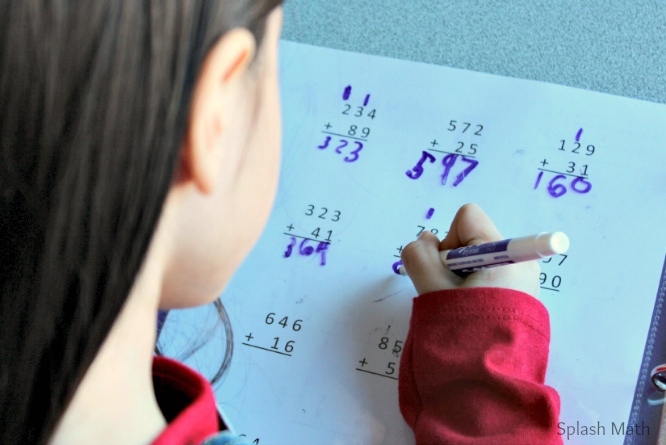
An NIH study highlights that a strong foundation in basic math skills (like number system knowledge) in first grade is essential for future math success and adult numeracy. First-grade math builds on the foundation laid in kindergarten, making it a prime time for parents and teachers to identify and address any early learning gaps. For more insights into teaching first-grade math, explore this comprehensive guide: How to Teach First-Grade Math.
Let’s dive into essential first-grade math skills and simple activities parents can use for reinforcement, covering number sense, addition and subtraction, geometry, measurement, data handling, and money.
- Number Sense: Let’s dive into important number sense skills kids learn in the first grade.
1) Count to 120, starting at any number less than 120.
i) Use a number chart and ask them to start counting from a number like 83, continuing to 120.
ii) Here are interactive counting games to reinforce this skill: Kids will practice counting on a number line to find a missing number, connecting blocks to fix the counting sequence, and counting forward from any given number.
2) Read and write numbers.
i) Practice writing numbers on paper, starting with numbers 1-100, then 101-120.
ii) Use flashcards with written numbers and have them read the numbers aloud.
3) Understand that two-digit numbers represent amounts of tens and ones.
i) Use blocks or counters to group numbers into sets of tens and ones (e.g., 34 is 3 groups of 10 and 4 ones).
ii) Write two-digit numbers and ask them to identify the number of tens and ones (e.g., 58 is 5 tens and 8 ones).
iii) Try these engaging games that use base ten blocks to teach kids about ones and tens:
4) Compare two-digit numbers by evaluating the tens and ones digits.
i) Write two two-digit numbers and ask which is larger by comparing the tens and ones (e.g., 47 vs. 52).
ii) Use number cards to compare numbers like 63 and 67 by evaluating the tens first, then the ones.
iii) Here are interactive games in which your child will learn to compare numbers by looking at ones and tens digits:
- Addition and Subtraction: Mastering addition and subtraction facts within 20, where students can quickly recall answers without counting, is considered a critical skill for first graders. Here are essential addition and subtraction skills taught in first-grade math:
1) Addition within 100 (adding a two-digit number and a one-digit number; adding a two-digit number and a multiple of 10.)
i) Write problems like “45 + 7” and “30 + 50” for them to solve using a number line or mental math.
ii) Use small objects like blocks to visually add a two-digit number and a one-digit number or a multiple of 10.
iii) Here are fun addition games for reinforcement: These games guide kids through horizontal and vertical addition problems. Kids will also learn to add and subtract using place value charts and base-ten blocks.
2) Mentally calculate 10 more or 10 less than a given 2-digit number without counting. Subtracting multiples of 10 from multiples of 10 in the range of 10-90 using different strategies.
i) Flashcards: Give them flashcards with two-digit numbers and have them quickly say what 10 more or 10 less would be.
ii) Number Ladder: Write a 2-digit number at the bottom of a ladder (e.g., 34). Ask your child to mentally calculate 10 more and write the answer one step above (44), then 10 less and write it one step below (24). Continue with different numbers to build confidence.
iii) Practice with Worksheets: Consider these fun worksheets to boost your child’s mental addition and subtraction skills. In these worksheets, kids will learn to use multiples of 10 to create equivalent expressions and simplify a given problem.
4) Properties of addition and subtraction:
i) Ask kids to swap numbers in the addition sentences and check if the new order affects the sum. Do the same activity with subtraction sentences.
ii) Here are fun games to practice the commutative property of addition in a fun and engaging way. Kids will identify the turn-around facts and complete equivalent addition facts using the commutative property.
5) Add and subtract within 20, using strategies such as:
• Counting on
i) “Start from Here” Game: Say a number (e.g., “5”) and ask your child to count on from there to add another number (e.g., “5 + 4”). They should start from 5 and count, “6, 7, 8, 9,” to get the sum.
ii) Counting on strategy games: In these games, kids will solve simple addition problems like 5 + 4 with the help of visuals—a group of 5 objects followed by 4 more objects.
• Making ten; creating equivalent but simpler or known sums.
i) Give your child a number (e.g., 8) and ask them how many more they need to make 10. Then, ask them to solve a problem using that strategy (e.g., “8 + 5: Make a 10 by adding 2 to 8, then add the remaining 3, so 8 + 5 = 13”).
ii) Reinforce this crucial mental addition strategy with targeted interactive games that focus on using the number 10 to simplify calculations. Kids will learn to break down addition problems, making mental math easier. Plus, they receive instant feedback and helpful explanations for any mistakes!
- Decomposing a number leading to a ten
i) For a problem like “12 + 3,” help your child decompose the 12 into 10 and 2, simplifying the problem as 10 + 2 + 3.
ii) Try these interactive games in which kids will learn to compose and decompose numbers to make 10. These games also include fun activities on number bonds and ten frames.
• Using the relationship between addition and subtraction
i) Fact Family Triangles: Write down three related numbers (e.g., 7, 3, 10) and ask your child to write both the addition and subtraction sentences that use these numbers (e.g., “7 + 3 = 10,” “10 – 7 = 3”).
• Using a number line
i) Number Line Jump: Have your child solve addition and subtraction problems by “jumping” forward or backward on a number line (e.g., for “9 + 4,” they start at 9 and jump 4 spaces forward to land on 13).
ii) Number Line Addition Games: Kids will solve a series of addition problems (straightforward sums and problems with missing addends) with the help of number line jumps.
- Geometry: In first grade, kids learn to reason with shapes and their attributes.
- Understanding defining (sides) and non-defining attributes (color) of different shapes. Drawing shapes with certain defining attributes.
i) Show them different shapes (e.g., a triangle with straight sides) and ask which features define the shape (e.g., “A triangle always has 3 sides”).
ii) Ask them to draw a shape like a rectangle, focusing on its defining attributes (e.g., 4 straight sides, 2 pairs of equal length).
iii) Here are engaging games that help kids identify defining attributes of various 2D and 3D shapes:
- Composing 2D shapes (rectangles, squares, trapezoids, triangles, half-circles, and quarter-circles) or 3D shapes (cubes, right rectangular prisms, right circular cones, and right circular cylinders) to create a composite shape.
i) Use paper cutouts of 2D shapes to combine and create new shapes (e.g., combine two triangles to make a square).
ii) Use building blocks or toys to stack 3D shapes like cubes and cylinders to form new composite structures.
iii) Here are some fun worksheets that challenge kids to create different shapes using smaller shapes:
- Partitions circles and rectangles into halves and quarters.
i) Draw a circle or rectangle on paper and help them fold it into halves and quarters, then color each part.
ii) Cut a sandwich or a pizza into halves and quarters and ask them to describe the partitions.
iii) Encourage your child to play interactive games that simplify the concept of the equal parts through clear visuals.
- Measurement and Data: Let’s take an overview of important measurement and data handling skills kids learn in 1st-grade.
- Ordering three objects by length; comparing the lengths of two objects indirectly using a third object.
i) Collect three different objects (e.g., pencils, sticks, or toys) and have them arrange them from shortest to longest.
ii) Use a third object (like a ruler) to compare the lengths of two other objects by placing them beside the ruler to see which is longer or shorter.
iii) Teach kids how to order objects by length through interactive games. These games guide kids at every step of the way and help kids grasp each concept through repeated instructions:
- Measuring the length of an object using same-size “length units” placed end to end with no gaps or overlaps; expressing the length of an object as a whole number of “length units.”
i) Use small blocks or LEGO pieces to measure the length of an object by placing them end to end and counting the total number of blocks.
ii) Measure the length of a book or toy using same-size paperclips, and ask them to express the total length in “paperclip units.”
iii) Length measurement games designed for 1st graders: Kids will measure the length of a given object using iterating length units.
- Organize, represent, and interpret data with up to three categories; answer questions about i) the total number of data points, ii) how many in each category; compare one category with another.
i) Sort a group of toys into three categories (e.g., cars, dolls, and blocks) and make a simple bar chart to show how many are in each group.
ii) Create a chart with categories like “favorite fruits” and have them fill in data from family members or friends, then compare which category has the most and least data points.
iii) Data handling games: Kids learn to read data using tables and answer questions using counting and comparison skills.
- Time and Money: In first grade, kids learn to tell and write time and money.
1) Telling and writing time in hours and half-hours using analog and digital clocks; develops an understanding of common terms, such as, o’clock and half past.
i) Use a toy or paper clock and move the hands to show times like 3 o’clock or half past 4, then have them say or write the time.
ii) Show them the time on a digital clock (e.g., 02:30) and ask them to match it on an analog clock, explaining “o’clock” and “half past.”
iii) Interactive telling time games: Engage kids in fun analog clock games that make reading clocks a fun adventure through activities like setting time, identifying the clock showing a given time, and telling time in half hours.
iv) Digital clock worksheets: These worksheets are packed with exercises focusing on matching analog clock and digital time.
2) Identify coins (penny, nickel, dime, and quarter) and their value and
use the cent symbol appropriately. Counts a mixed collection of dimes and pennies and determines the cent value.
i) Give them a handful of coins and ask them to sort them into groups (pennies, nickels, dimes, and quarters) while identifying each one and its value.
ii) Provide a mix of dimes and pennies, and ask them to count the total cent value (e.g., 3 dimes and 5 pennies = 30 cents + 5 cents = 35 cents), using the cent symbol in writing.
iii) Money games: From separating coins to counting the same type of coins, these playful games cover everything for a well-rounded practice:
iv) Money worksheets: Incorporate printable money worksheets into kids’ study routines as task cards or fun challenges. Kids will practice identifying coins and their values, drawing coins, counting coins, and more.
Related Reading: How to Make Math Fun for Kids
5. Science in the 1st Grade

In 1st grade, kids will learn more about life science and natural science. They are naturally curious about the world around them, often asking questions about everything from animals to the weather. Teachers can capitalize on this curiosity by creating engaging science lessons that spark exploration and discovery.
Introduce basic science concepts using pictures and intuitive experiments, such as:
- Understand the life cycle of a butterfly.
- Classify objects by shape, color, material, and texture.
- Identify and sort solids and liquids. Learn the different properties of gas, liquid, and solid.
- Understand the effects of cooling and heating on water.
- Learn about shadows.
- Identify living and nonliving things.
- Understand the concepts of force, motion, pull, and push.
- Learn about animals and insects, their characteristics, body parts, habitats, and life cycle.
- Learn about plants, their parts and functions, types of plants, and habitats.
- Understand the earth’s weather, climate, rain formation, etc.
- Introduction to standard measurement tools like thermometers.
- Learn about weather patterns.
- Environmental science.
Related Reading: Easy Science Experiments for Kids to Enjoy & Learn
6. Social Studies in the 1st Grade
Social studies is one of the important subjects taught in the first grade. Young learners in first grade are naturally curious about the world around them, including their own families and communities. Social Studies in this grade level builds upon this natural interest by exploring family history, cultural diversity, and citizenship.
So, what do first graders learn in social studies? Through engaging activities, students will better understand social skills, their place in the world, and the interconnectedness of different cultures. Some of the basic social science concepts taught in the 1st grade are:
- Explore how language, customs, and traditions help shape family and community identity while recognizing similarities and differences across cultures.
- Learn about important historical figures, events, and symbols, and celebrate national holidays such as Independence Day and Presidents’ Day.
- Understand the difference between rules and laws, and how they help protect the community’s rights and safety.
- Recognize the traits of responsible citizens, participate in group activities, and discuss ways to care for the world.
- Use maps, symbols, and directions to locate important places and describe objects within the classroom.
- Learn how communities modify their environments to meet basic needs, such as building roads, bridges, and parks, while understanding the effects of human interaction on nature.
- By creating personal timelines and exploring the past, students can develop an awareness of family history and how families change over time.
- Understand that people have unlimited wants but limited resources, leading to choices in purchasing goods and services.
7. Geography in the 1st Grade

In 1st grade, children are introduced to the wonderful world of geography. This subject helps them understand more about the Earth and the places on it. Here are some of the things they learn in their geography lessons:
- Maps and Globes: Learning to use maps (map keys, symbols) and globes to find places (home, classroom, garden, etc.).
- Countries, Continents, and Cultures: Learning about the countries, cultures, and continents of the world, including the country and state where they live
- Directions: Learning cardinal directions.
- Landforms: Learning about different landforms, such as mountains and islands
- Bodies of water: Learning about bodies of water, such as oceans, rivers, etc.
- Caring for the Earth: Learning how people use and change the natural world.
- Exploring your own area and its landmarks
8. Creative Arts in 1st-Grade
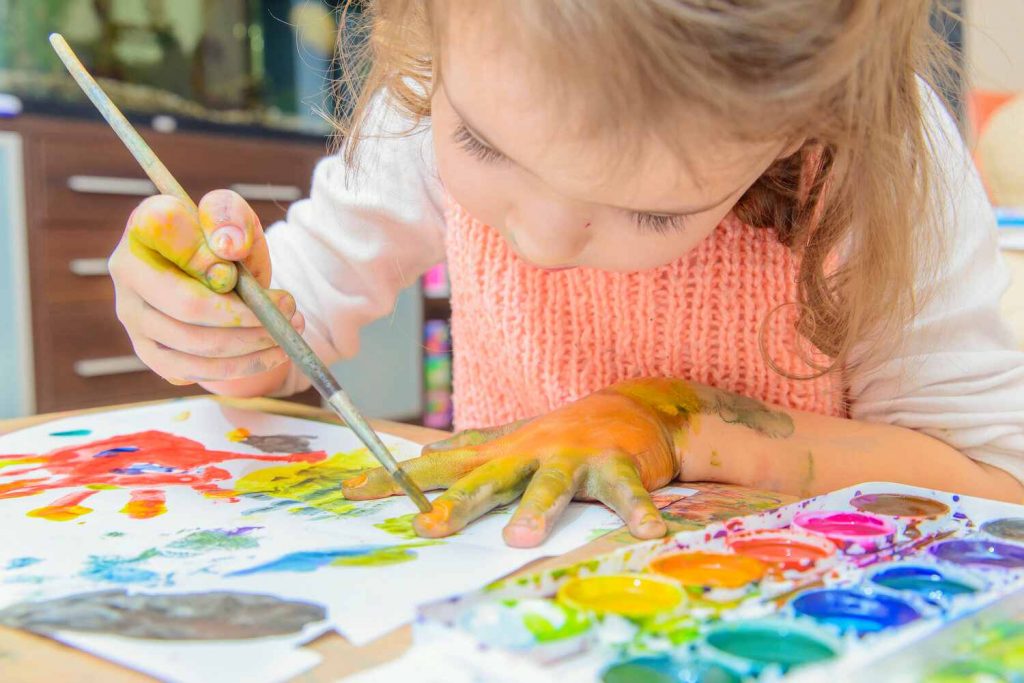
Art encompasses various forms beyond drawing and painting, including music, sculpting, building, and woodworking. First graders are inherently creative thinkers, and with the right techniques, they can be motivated to unleash their imaginations. Here are some of the exciting things kids learn in their art classes:
- Drawing and Coloring:
i) These coloring games combine learning with fun. Kids can explore the world around them while coloring pictures of birds, animals, kitchen utensils, and more. As they color, children will learn exciting facts about each object to spark curiosity.
ii) Ask students to create a drawing of their favorite place. Afterward, they can “perform” by explaining why this place is special to them and how it makes them feel, helping them connect emotionally and express their feelings through art and storytelling.
- Music:
i) Have students listen to a short piece of classical or instrumental music. Afterward, ask them to draw a picture that reflects how the music made them feel (e.g., a sunny day for happy music or rain for sad music).
ii) Help your first grader dive deeper into music with engaging interactive games!
Instruments: Violin, trumpet, ukulele, piano, flute, drum set, pan flute, and more!
Features: i) They can experiment with instruments in free-play, exploring sound at their own pace. ii) In play-along mode, they’ll learn to play real tunes, with the game showing them exactly which keys or strings to press.
- Crafts and Projects
- Exploring Famous Artists
- Expressing Feelings
- Appreciating Beauty
Related Reading: Super Cool Art Activities for Kids
9. Physical Education in 1st-Grade
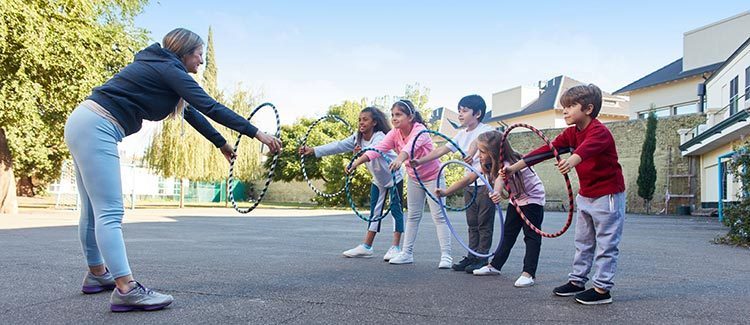
In a time when childhood obesity and diabetes are prevalent, physical activity is crucial. Encouraging physical activity in first grade sets a pattern for a healthy lifestyle. In 1st grade PE classes, kids have a blast while learning important physical skills:
- Exercise and Movement
- Teamwork
- Sports Basics
- Healthy Habits
- Fun and Fitness
Related Reading: Best Energetic PE and Gym Games for Kids
6 Reasons Why Grade 1 Is Important
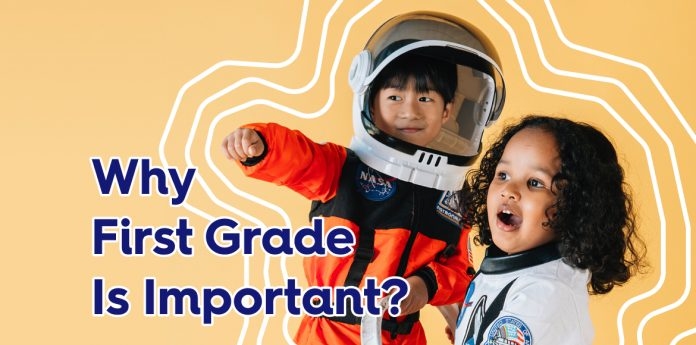
In first grade, sensory and cognitive experiences are refined and put to use! Why is first grade so important? It is a critical year because it builds the foundation for your child’s future education. It isn’t just the next step after kindergarten—it’s an important year that helps set your child up for all the learning to come. Here’s why this year is important for kids:
- Building the Learning Foundation: First grade is the groundwork for future education. It’s where kids develop essential skills that act as the building blocks for everything they will learn in the years to come.
- The Magic of Reading: Learning to read in first grade opens the door to endless adventures. Reading helps children explore new worlds through amazing stories, acquire knowledge, and gain a lifelong learning tool.
- Math Fundamentals: First grade introduces the basics of math, like counting, addition, and subtraction. These are like the building blocks of math, and they will use them in math class for years to come.
- Developing Social Skills: Beyond academics, first grade teaches kids how to make friends, work with others, and develop key social skills they’ll carry throughout life.
- Confidence Building: Success in first grade helps boost children’s self-esteem. As they master new skills, they gain confidence in taking on more challenging tasks.
- Setting a Positive Tone: A positive experience in first grade can set the tone for a child’s future school years. Enjoying school at this stage encourages enthusiasm for learning in the long run.
6 Essential Tips for First-Grade Parents
Wondering what do kids learn in first grade and how to support them for a successful year? Relax—your stress can easily affect your child. To help make the transition smoother, here are some useful tips to guide you:
- Visit the School and Classroom: Familiarize yourself with your child’s learning environment. This helps both you and your child feel more comfortable.
- Communicate with the Teacher: Contact your child’s first-grade teacher to learn about the curriculum and expectations for the year.
- Build a Parent Network: Reach out to other first-grade parents to exchange experiences and find support with any challenges their children face.
- Openly Talk to Your Child: Have conversations with your child about what to expect—new friends, teachers, and a different classroom setting. This can help them feel more at ease.
- Research the Curriculum: Look up your district’s first-grade curriculum online to get an overview of what subjects will be covered.
- Teach Key Concepts at Home: Before the school year begins, start introducing basic concepts like addition, subtraction, and life sciences. This early exposure will help your child feel more confident when these subjects are introduced in class.
With these steps, you and your child will feel more prepared for the exciting journey ahead!
Related Reading: What Do Kids Learn in Second Grade
Conclusion
In this guide, we took an overview of what kids should know by the end of the first grade. When teaching first graders, it’s important to be aware that students will have different learning levels. By staying informed about the Grade 1 syllabus and knowing crucial first-grade learning objectives, both parents and teachers can feel more at ease. This guide has covered the essentials of what first graders learn, along with activities to support their learning at every step.
Now that you have a clearer picture of to expect in the first grade, take a deep breath, and get ready for this exciting new chapter in your child’s journey!
Frequently Asked Questions (FAQs)
What are the basic elements of the 1st-grade course outline?
If you’re wondering what to teach a grade 1 child, focus on foundational skills like reading, basic math, and developing social abilities to set them up for future success. The 1st-grade course typically includes basic math (addition, subtraction, counting), reading and writing (phonics, phonemic awareness, sight words, sentence writing, comprehension), science (life sciences, weather), social studies (family, community, maps), creative arts, and social skills development through teamwork and group activities.
Is the structure of first-grade skills the same all around the state?
While the core subjects in first grade, like math, reading, writing, science, and social studies, are similar across states, the specific structure and emphasis can vary by district due to differences in state standards and curriculum guidelines. You might also find some variations in the lesson planning or teaching methods. Consult your child’s school and teacher to know more about what they will teach in the first grade.
What do kids learn before starting first grade?
Before starting first grade, children typically learn basic skills such as recognizing letters and numbers, counting, simple addition and subtraction, understanding phonics and sight words, basic handwriting, and social skills like sharing and following directions. These foundational skills help prepare them for more structured learning in first grade.

















